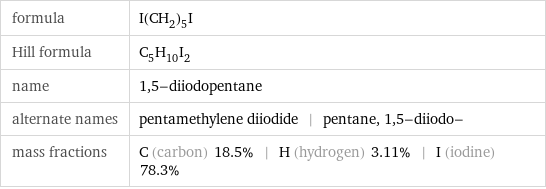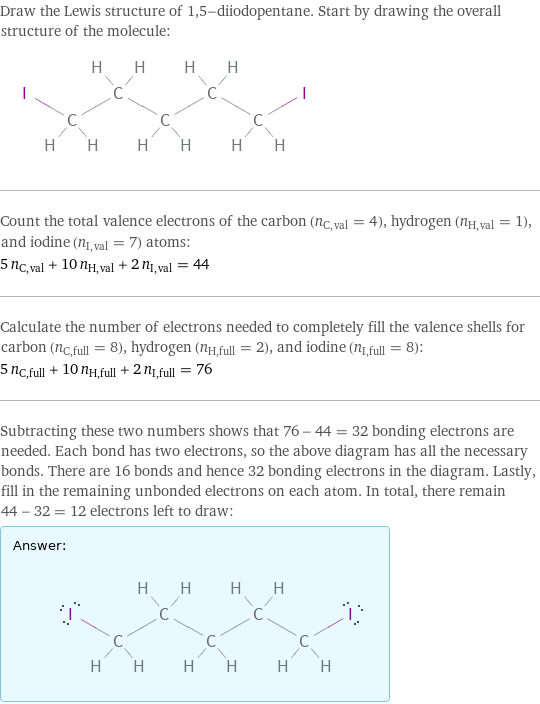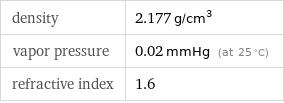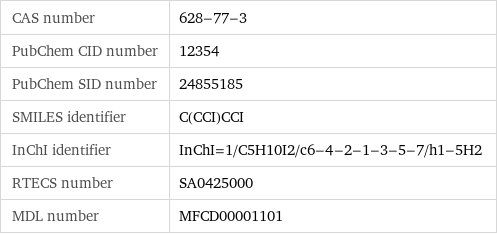Input interpretation

1, 5-diiodopentane
Chemical names and formulas

formula | I(CH_2)_5I Hill formula | C_5H_10I_2 name | 1, 5-diiodopentane alternate names | pentamethylene diiodide | pentane, 1, 5-diiodo- mass fractions | C (carbon) 18.5% | H (hydrogen) 3.11% | I (iodine) 78.3%
Lewis structure

Draw the Lewis structure of 1, 5-diiodopentane. Start by drawing the overall structure of the molecule: Count the total valence electrons of the carbon (n_C, val = 4), hydrogen (n_H, val = 1), and iodine (n_I, val = 7) atoms: 5 n_C, val + 10 n_H, val + 2 n_I, val = 44 Calculate the number of electrons needed to completely fill the valence shells for carbon (n_C, full = 8), hydrogen (n_H, full = 2), and iodine (n_I, full = 8): 5 n_C, full + 10 n_H, full + 2 n_I, full = 76 Subtracting these two numbers shows that 76 - 44 = 32 bonding electrons are needed. Each bond has two electrons, so the above diagram has all the necessary bonds. There are 16 bonds and hence 32 bonding electrons in the diagram. Lastly, fill in the remaining unbonded electrons on each atom. In total, there remain 44 - 32 = 12 electrons left to draw: Answer: | |
3D structure

3D structure
Basic properties

molar mass | 323.94 g/mol phase | liquid (at STP) melting point | 9 °C boiling point | 101.5 °C (measured at 399.9 Pa) density | 2.177 g/cm^3 solubility in water | insoluble
Units

Liquid properties (at STP)

density | 2.177 g/cm^3 vapor pressure | 0.02 mmHg (at 25 °C) refractive index | 1.6
Units

Chemical identifiers

CAS number | 628-77-3 PubChem CID number | 12354 PubChem SID number | 24855185 SMILES identifier | C(CCI)CCI InChI identifier | InChI=1/C5H10I2/c6-4-2-1-3-5-7/h1-5H2 RTECS number | SA0425000 MDL number | MFCD00001101
Safety properties

flash point | 110 °C
Toxicity properties

RTECS classes | mutagen